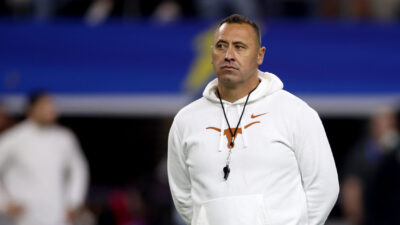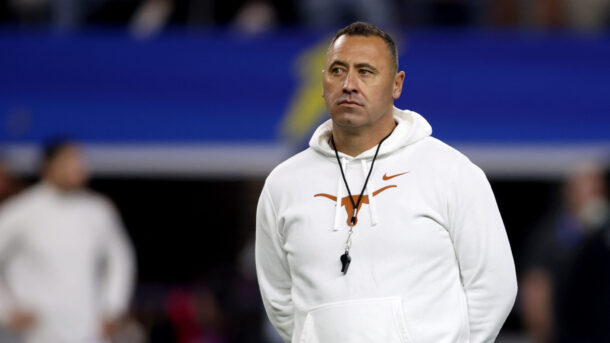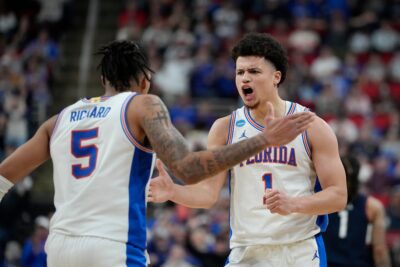Ad Disclosure
There is no more important name in basketball than Dr. James Naismith.
Had he not hung peach baskets at each end of the gym at the YMCA in Springfield, Mass., and invited a game for his students to play indoors during the cold winter months back in 1891, basketball as we know it today probably wouldn’t exist.
Naismith not only developed the game by establishing its original set of 13 rules, he went on to become the first coach in Kansas’ storied history and helped spread his sport throughout the country through a star-studded coaching tree with branches that include Hall of Famers Phog Allen, Adolph Rupp, Dean Smith, Roy Williams and others.
So it’s only appropriate that one of the 2 major awards for college basketball’s National Player of the Year is named in his honor.
What Is The Naismith Award?
Presented annually by the Atlanta Tipoff Club since 1969, the award honors the “outstanding basketball player who achieves tremendous on-court success.”
According to its official website, the Naismith Award “symbolizes excellence, tradition and prestige” while rewarding the outstanding efforts of college athletes for their drive and achievements on the court.
UCLA superstar Lew Alcindor, who went on to a Hall of Fame career in the NBA as Kareem Abdul-Jabbar, was the first recipient. Anne Donovan of Old Dominion was the first recipient of the Women’s Naismith Award after it was established in 1983.
Although the Naismith Award and the other major Player of the Year honor, the Wooden Award, have often recognized the same player, there have been seven instances in which they have had different winners (1978, 80, 81, 85, 86, 89 and 95).
How Is The Naismith Award Selected?
Before each season, the Atlanta Tipoff Club’s board of selectors comprises a list of the top 50 players in college basketball. The group also releases a list of 30 midseason candidates before the group is narrowed to 4 finalists based on their performance throughout the regular season.
Their names then appear on a ballot that is sent to a national voting academy composed of leading basketball coaches, administrators and journalists. There is also an online fan ballot component that counts for 25 percent of the overall vote. The top vote-getter announced as the winner of the award at the Final Four each year. The award is formally presented at a gala banquet in Atlanta later in April.
What Does The Naismith Trophy Look Like?
Although the award came into existence in 1969, the trophy now presented to the winner each year was created in 1982 by renowned sculptor Martin C. Dawe of Atlanta. It depicts the iconic image of an abstract player making a move to the basket with a ball held in both hands, one leg in the air and the other prepared to leave the ground.
The sculptor is mounted on top of a multi-layer wooden base with plaques bearing the names of each previous winner adorned around the bottom.
Which Schools Have Won The Most Naismith Awards?
Entering the 2024-25 season, Duke has produced the most Naismith Award winners with 8. They are Johnny Dawkins in 1986, Danny Ferry in 1989, Christian Laettner in 1992, Elton Brand in 1999, Shane Battier in 2001, Jason Williams in 2002, JJ Redick in 2006 and Zion Williamson in 2019.
UCLA is next with 5 winners. North Carolina, Purdue and Virginia have 3 Naismith Awards each while Indiana, Kansas, Kentucky and Oklahoma have 2.
Three players have won multiple Naismith Awards. UCLA center Bill Walton won it in all 3 of his college seasons (1973, ’73 and ’74). Virginia’s Ralph Sampson won it in each of his final 3 seasons (1981, ’82 and ’83) while Purdue’s Zach Edey won it as a junior and senior in 2023 and ’24.
While seniors dominate the list of recipients, with 31 of the 44 winners earning the award in the final year of eligibility, 3 freshmen have also brought home a Naismith – Texas’ Kevin Durand in 2007, Kentucky’s Anthony Davis in 2012 and Duke’s Williamson in 2019.
Award-winning columnist Brett Friedlander has covered the ACC and college basketball since the 1980s.



